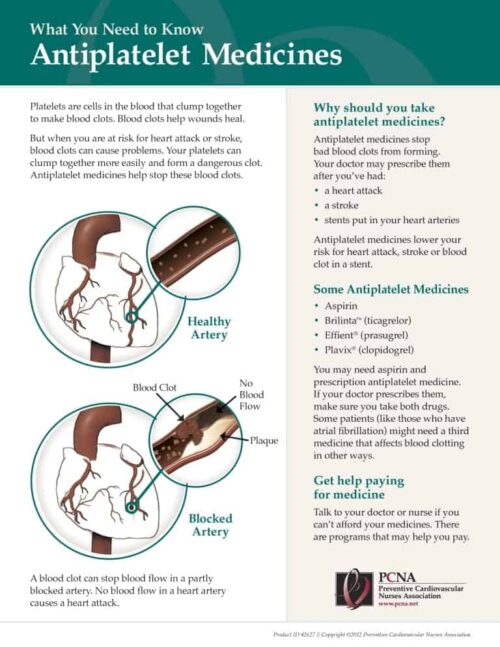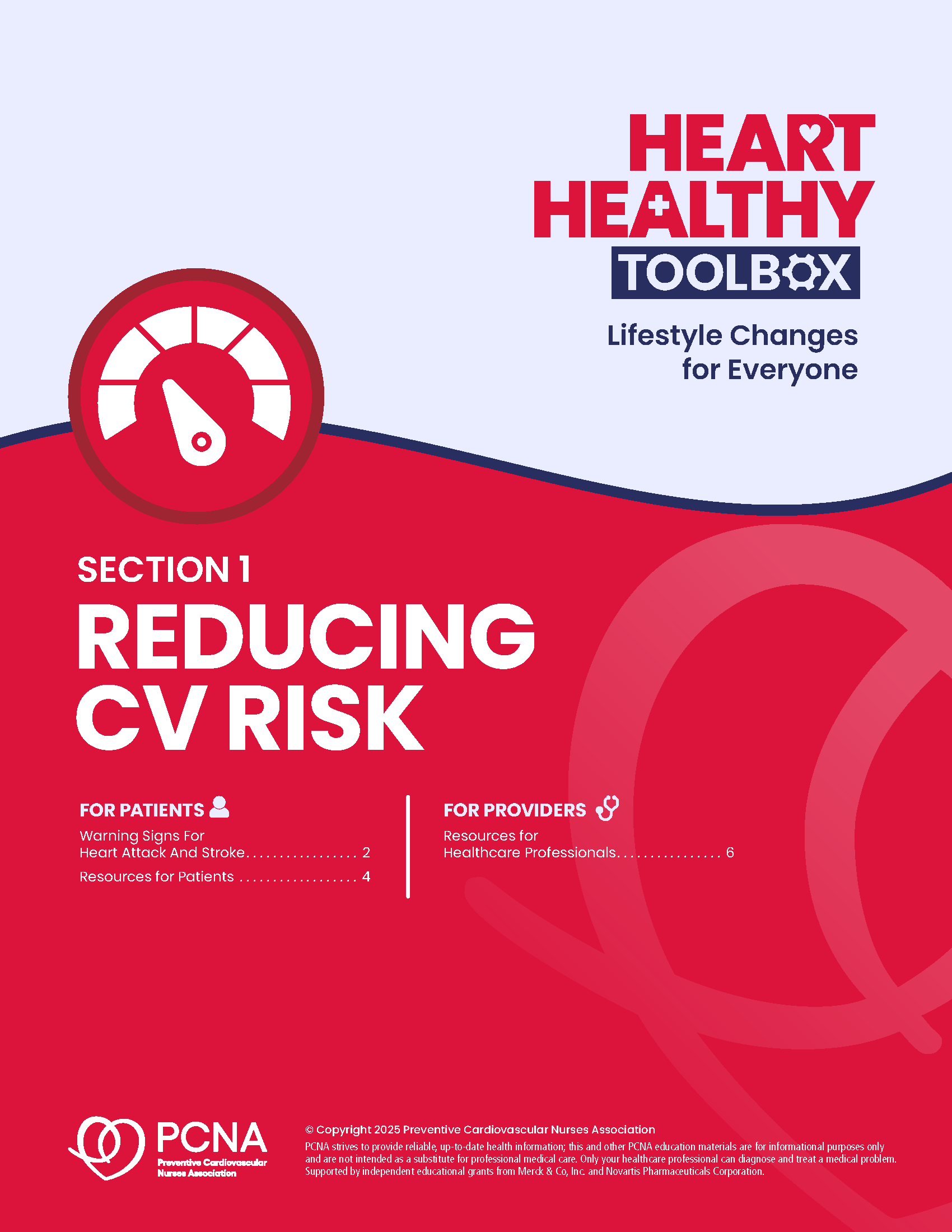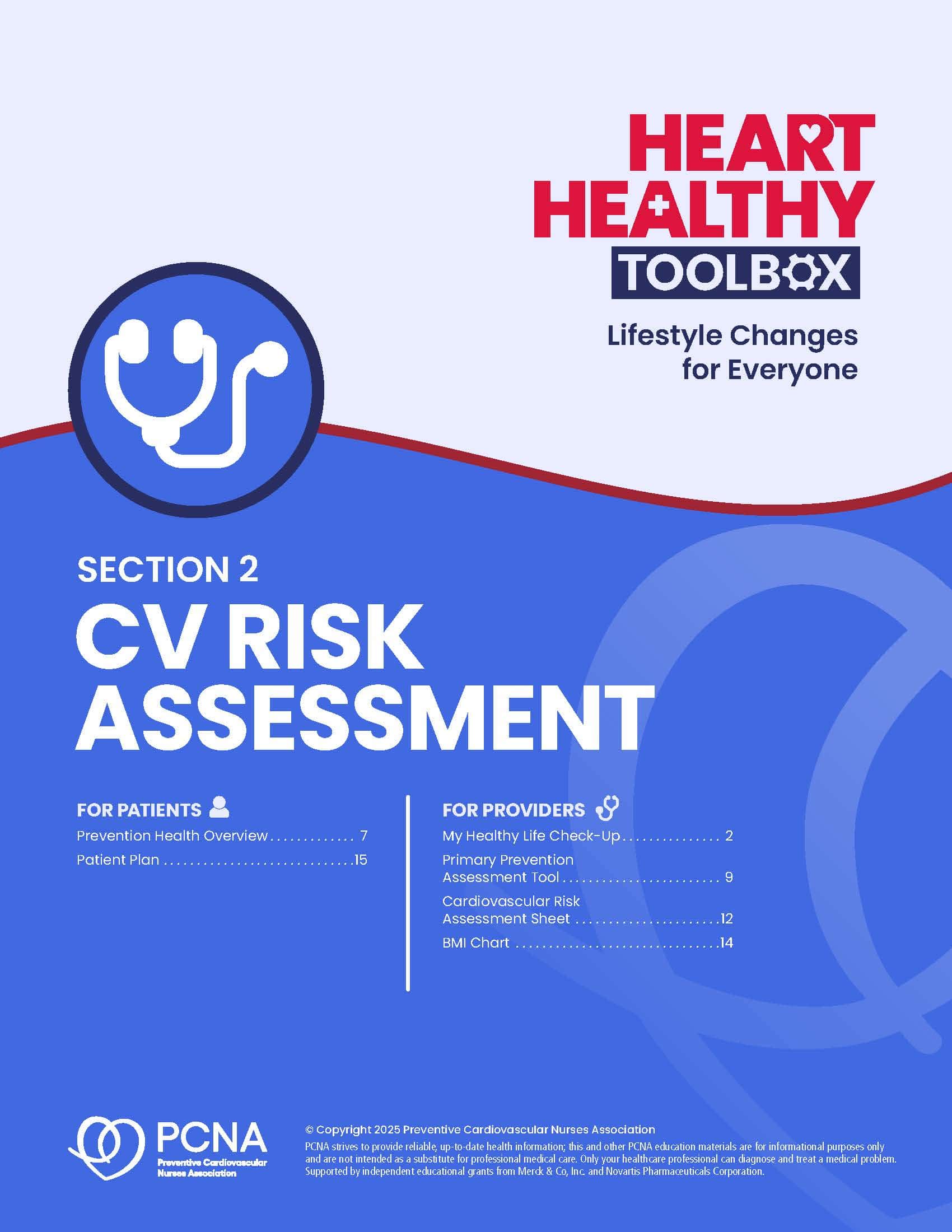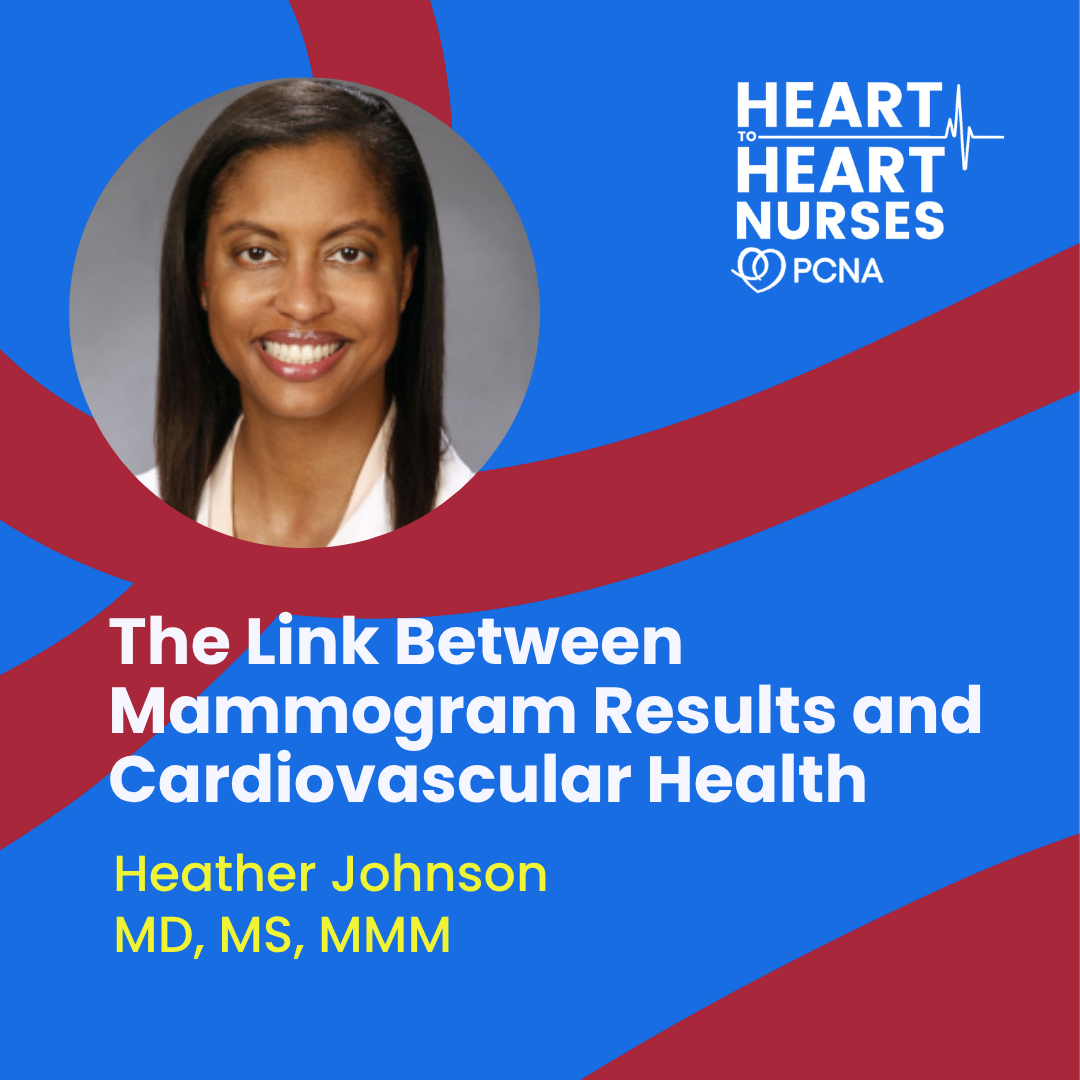Breast artery calcification is an incident finding on routine screening mammograms and reflects an artery change. It has been associated with an increased risk of cardiovascular disease and CV events. Learn from guest Heather Johnson, MD, MS, MMM, how the finding can lead to improved risk reduction measures and improved patient outcomes.
Episode Resources
I’m Erin Ferranti, board president for PCNA, and I’d like to welcome you to this episode of the Heart to Heart Nurses Podcast. PCNA is the proud home of cardiovascular nurses and one of the leading figures in the fight against cardiovascular disease. We have the resources you need for your day-to-day practice or to follow your passion to new areas of learning and growth.
Geralyn Warfield (host): 00:20)
Welcome to today’s episode where we are so excited to be talking with Dr. Heather Johnson. Could you please introduce yourself to our audience?
Heather Johnson (guest): (00:26)
Thank you so much for this opportunity. I’m Dr. Heather Johnson, Director of Preventive Cardiology for Women’s Services at Baptist Health South Medical Group, a part of the Christine E. Lynn Women’s Health and Medical Wellness Institute.
Geralyn Warfield (host): (00:40)
Well, we’re so glad to have you here and we’ve got a particular topic that maybe people are not thinking about when it comes to cardiovascular health and that is breast artery calcification. So, could you get us started by telling us about why that’s important for our audience?
Heather Johnson (guest): (00:54)
Well, thank you for letting me highlight breast artery calcification. I have to say the talks this morning [at the 2025 PCNA Cardiovascular Nursing Symposium] also highlighted it. So, some people have missed some great news already.
But breast artery calcification is an incidental finding on routine screening mammograms. So, when women present and they have their mammograms, sometimes there is thickening of the breast artery that is noted. That is called breast artery calcification.
So, breast artery calcification, when looking at the mammogram, looks like a train track or some may say a tram track appearance, two thickened bright lines. And it’s thickening of the breast artery. Now we say this because it is not related to breast cancer. It is not to cause alarm as far as breast cancer.
It is an artery change. And by itself, it does not cause any damage to the breast tissue specifically as far as blockage and flow.
But in women it’s been associated with an increased risk of cardiovascular disease and cardiovascular events. So, we are excited as far as the increase in research that’s really highlighting the role of breast artery calcification to let women know that they may be at increased risk and to ensure they have what I call a preventive cardiovascular risk assessment.
Now, if someone already has a history of heart disease, we understand the finding of artery issues. However, breast artery calcification is an incidental finding that can really open the world up to ensure that blood pressure, cholesterol, diabetes, and certain risk assessment imaging, like coronary artery calcium scans, can be done to ensure women understand their personal individualized risk for heart disease.
Geralyn Warfield (host): (02:41)
So, if somebody had a question, whether they were a patient or a healthcare professional, about breast artery calcification, are there some resources that you could point them toward?
Heather Johnson (guest): (02:49)
So, it’s great question. The American Heart Association has definitely highlighted this. It actually is really growing as far as recent data and clinical trials and relationship to breast artery calcification. However, our biggest barrier is that currently where I am at the Christine Lynn Women’s Health and Wellness Institute, we’re one of the few centers that are even reporting breast artery calcification. So many women are not even aware.
It’s not a special request. We don’t have an add-on fee. It’s an incidental finding the same way it’s reported as an incidental finding on a chest x-ray or a CAT scan. So, step one is awareness.
And we are encouraging women to ask their institutions and ask their imaging centers, do they report breast artery calcification? And there’s been a big focus as far as really highlighting for women to take initiatives and to make sure they have the full risk assessment that’s available.
We have a dedicated program where women find out the same way their same day mammogram results in addition to whether or not they have breast artery calcification. This way they can go back to their referring team and also have access to a preventive cardiology clinic for assessment.
Geralyn Warfield (host): (03:59)
Now one of the things that you alluded to and mentioned briefly in your previous answer was about clinical trials. And that’s very important for us in order to get information that we can use in clinical practice. Would you like to talk a little bit more about that?
Heather Johnson (guest): (04:12)
Clinical trials are very important. There has been a lot of innovation, particularly in preventive cardiovascular conditions and treatments. However, we have to do better. We have to have greater diversity, not just when we talk about as far as in women and gender diverse individuals, but also race and ethnicity diversity, geographic diversity, to ensure that all populations are represented.
This includes starting with the research team, the research leadership, who’s designing it, also community engagement and clinical trial development, to making sure that the flexibility, and the schedules, and even the outcomes that we select are important to the population. But then also with clinical trials, supporting implementation and ensure there’s equity as far as these great advances available to everybody.
Geralyn Warfield (host): (05:04)
We are going to take a quick break, and we will be right back.
Geralyn Warfield (host):
Welcome back to our audience and our discussion about clinical trials is going to continue just a little bit because how do we take those guideline-based, evidence-based pieces of information and apply them to clinical care? It’s not always easy, is it?
Heather Johnson (guest): (05:21)
It is not easy, and we have had a great time here at the [PCNA] conference really highlighting all the great science and the advancements as far as in cardiometabolic conditions and treatments. However, we have to think about the patient in front of us.
So, when we talk about practicing and putting them into clinical practice, yes, some of the medications we’ve talked about, they have prior authorization barriers. There’s cost barriers to the patient.
There’s also access, and follow-up, and also polypharmacy and different medications.
So, I always talk about the importance of why with the patient. Why am I recommending a certain medication? Why is it important to them? We’ve moved beyond just “lowering blood glucose” when we talk about diabetes to really reducing the impact on cardiovascular disease. And that’s a big why.
And so sometimes I say, when there are barriers to certain medications, we don’t stop. We try again, actually. Formularies change and costs change, and we find different ways to support our patients.
Team-based care also weighs as far as telemedicine, and more distant health approach as far as delivery of care; sometimes travel is an issue.
So, we want to make sure that our advances are available to all patients. How we deliver the care and also support adherence is very important.
Geralyn Warfield (host): (06:40)
If you had one takeaway that you could leave with our audience from our conversation today, what might that be?
Heather Johnson (guest): (06:46)
For every single patient, we have to make sure we’re providing the best cardiovascular care. What is their risk as far as cardiovascular events? Do they understand it? And are we applying the latest, best evidence to reduce their risk? It will take a team-based approach for that.
And we have to say kudos to our cardiovascular nurses. We need them in leadership and research. We need them in education, and we need them in implementation.
Geralyn Warfield (host): (07:14)
Thank you so very much for spending time with us today, for inspiring and empowering us to do our very best every day. And this is Geralyn Warfield, your host, and we will see you next time.
Thank you for listening to Heart to Heart Nurses. Visit PCNA.net for clinical resources, continuing education, and much more.
Topics
- Diagnostics and Devices
- Risk Assessment and Management
- Women and Heart Disease
Published on
October 6, 2025
Listen on:
MD, MS, MMM, FAHA, FACC, FASPC
Related Resources



Patient Education Handouts
Cardiovascular Risk Assessment – Heart Healthy Toolbox
September 02, 2025
- « Previous
- 1
- 2






